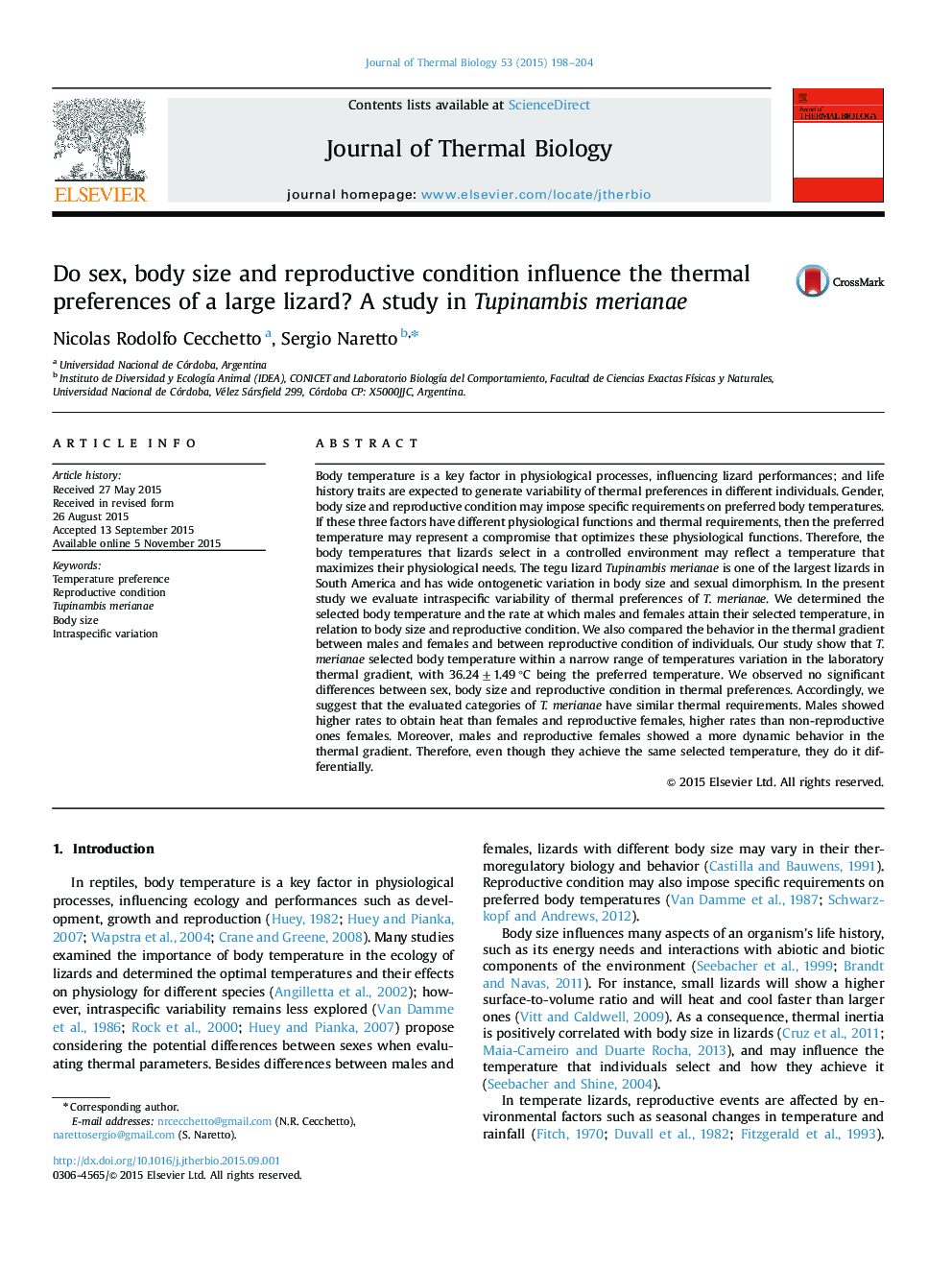| کد مقاله | کد نشریه | سال انتشار | مقاله انگلیسی | نسخه تمام متن |
|---|---|---|---|---|
| 2842792 | 1571093 | 2015 | 7 صفحه PDF | دانلود رایگان |

• Tupinambis merianae has a selected temperature (Tsel) of 36.2±1.49 °C.
• Sex, body size and reproductive condition does not influence selected temperature.
• Rate to attain the Tsel varies in relation to sex, body size and reproductive condition.
• Behavior under a thermal gradient changes according to reproductive condition.
Body temperature is a key factor in physiological processes, influencing lizard performances; and life history traits are expected to generate variability of thermal preferences in different individuals. Gender, body size and reproductive condition may impose specific requirements on preferred body temperatures. If these three factors have different physiological functions and thermal requirements, then the preferred temperature may represent a compromise that optimizes these physiological functions. Therefore, the body temperatures that lizards select in a controlled environment may reflect a temperature that maximizes their physiological needs. The tegu lizard Tupinambis merianae is one of the largest lizards in South America and has wide ontogenetic variation in body size and sexual dimorphism. In the present study we evaluate intraspecific variability of thermal preferences of T. merianae. We determined the selected body temperature and the rate at which males and females attain their selected temperature, in relation to body size and reproductive condition. We also compared the behavior in the thermal gradient between males and females and between reproductive condition of individuals. Our study show that T. merianae selected body temperature within a narrow range of temperatures variation in the laboratory thermal gradient, with 36.24±1.49 °C being the preferred temperature. We observed no significant differences between sex, body size and reproductive condition in thermal preferences. Accordingly, we suggest that the evaluated categories of T. merianae have similar thermal requirements. Males showed higher rates to obtain heat than females and reproductive females, higher rates than non-reproductive ones females. Moreover, males and reproductive females showed a more dynamic behavior in the thermal gradient. Therefore, even though they achieve the same selected temperature, they do it differentially.
Journal: Journal of Thermal Biology - Volume 53, October 2015, Pages 198–204